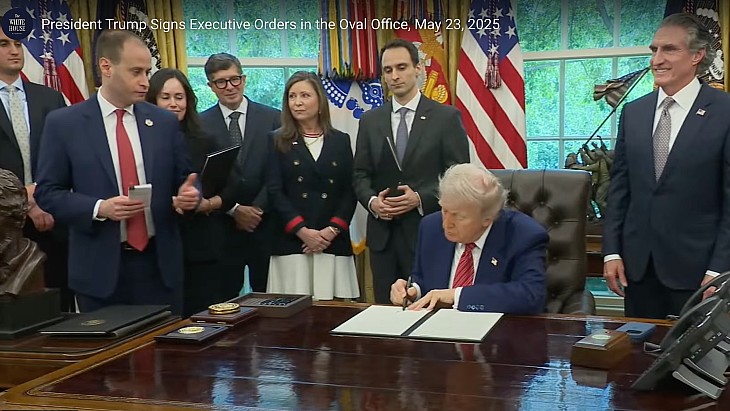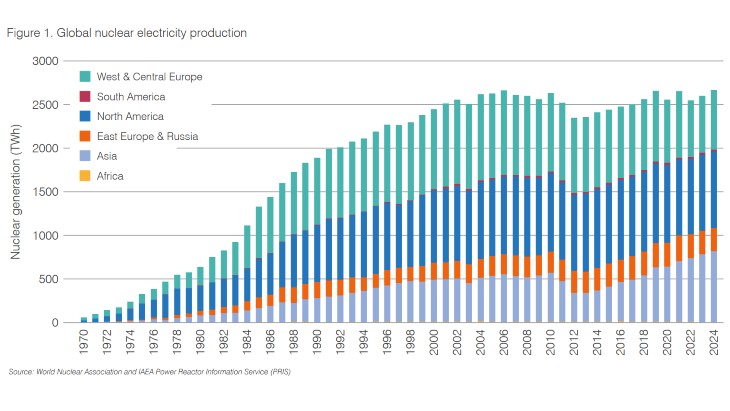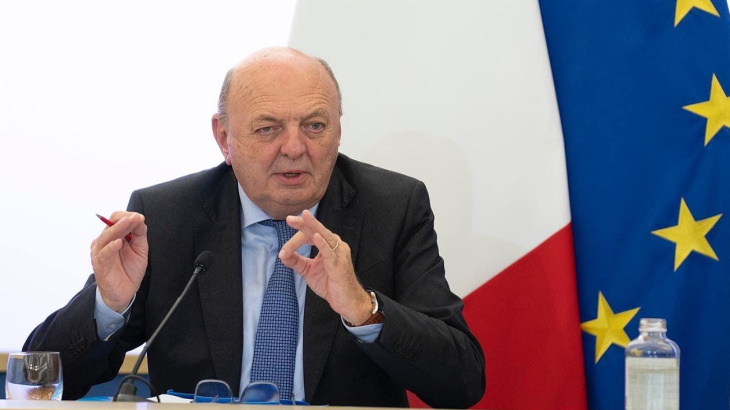The International Atomic Energy Agency (IAEA) projects continued growth in nuclear electricity generating capacity to 2030, although at a slower pace than previously anticipated. The Agency highlights nuclear energy's role in meeting global climate and sustainable development goals.
Nuclear power generating capacity is projected to grow by between 1.9% and 56% by 2030, compared with the previous estimate of between 2.4% and 68% from last year, the IAEA says in the latest edition of Energy, Electricity and Nuclear Power Estimates for the Period up to 2050. In the low case scenario, capacity is seen to expand to 390.2 GWe by 2030 from 382.9 GWe in 2015, while in the high case it grows to 598.2 GWe.
"Uncertainty related to energy policy, licence renewals, shutdowns and future constructions account for the wide range," the IAEA says. "The projections from 2030 to 2050 involve greater degrees of uncertainty."
The IAEA suggests over the short term, growth of nuclear energy will be impacted by factors including low natural gas prices, decreasing costs for renewables, "lack of market signals for low-carbon energy", and a slow growth in the global economy.
While the low case scenario shows only modest growth, the IAEA says the need to replace ageing reactors means "total new capacity constructed will be much greater than the apparent net increase".
Mikhail Chudakov, IAEA deputy director general and head of its nuclear energy department, said: "Nuclear energy, in the long run, will continue to play an important role in the world's energy mix. With populations and demand for electricity growing, nuclear power can help ensure reliable and secure energy supplies while reducing greenhouse gas emissions. In other words, nuclear power can help lift millions of people out of energy poverty while also combatting climate change."
The World Nuclear Association has developed its own vision for the future of electricity, referred to as Harmony. This is based on the International Energy Agency's 2-degree scenario which aims to avoid the most damaging consequences of climate change and requires a large increase in nuclear energy. Harmony envisages a diverse mix of low-carbon generating technologies deployed in such a manner that the benefits of each are maximised while the negative impacts are minimised. The Association's target for nuclear energy is to provide 25% of electricity in 2050, requiring roughly 1000 GWe of new nuclear capacity to be constructed.
Climate and sustainable development goals
The IAEA has also published Climate Change and Nuclear Power 2016. The annual publication includes a discussion on the potential impact of the Paris Agreement on nuclear power.
Head of the IAEA's planning and economic studies section David Shropshire said, "To meet the goal of the Paris Agreement, as well as to secure sustainable and reliable energy for all as called for by the Sustainable Development Goals, all low-carbon sources of energy are needed, including nuclear power, in a combined strategy with renewable energy, energy storage and energy efficiency."
A third recently-released IAEA publication, Nuclear Power and Sustainable Development, presents the scope and scale of energy challenges and the potential role of nuclear energy in sustainable development.
IAEA energy economist Loreta Stankeviciute said, "There is need for building awareness and recognition of the benefits nuclear power offers with respect to sustainable development, in particular avoiding air pollution, enhancing technological and human capital, and providing reliable and predictable electricity. Implementation of the Paris Agreement, together with sustainability enhance the value of having a nuclear power program."
Researched and written
by World Nuclear News












